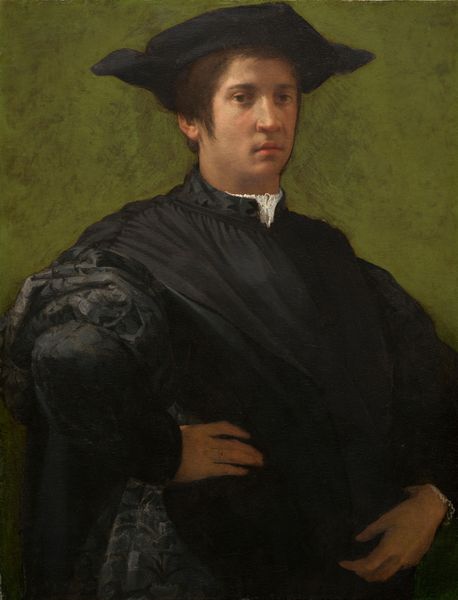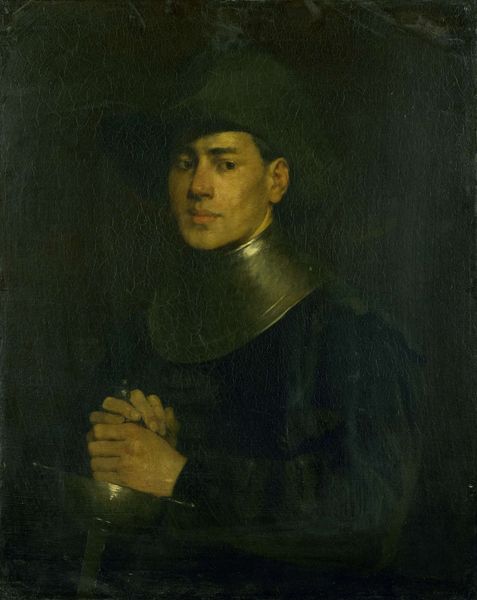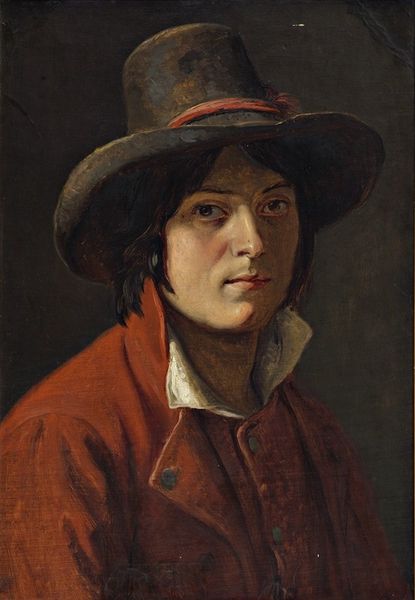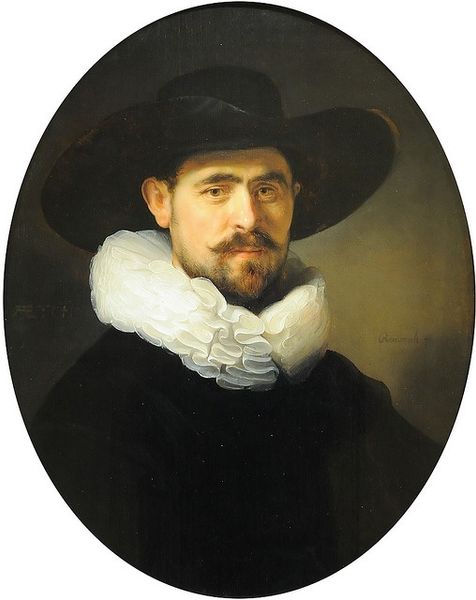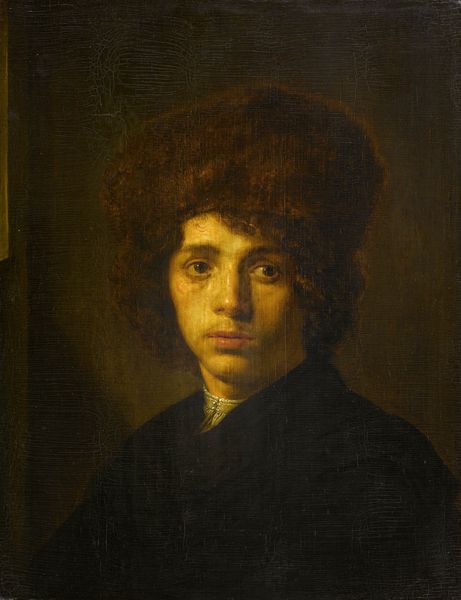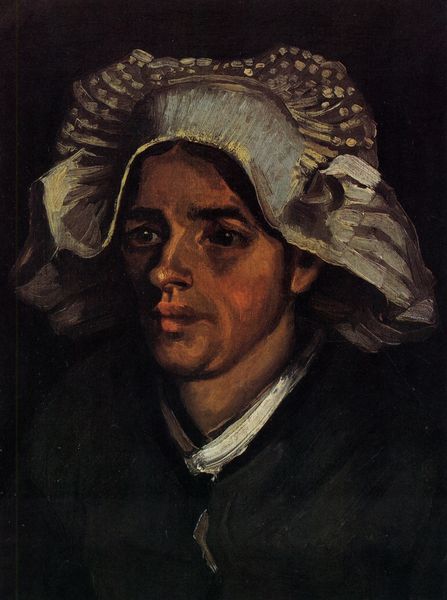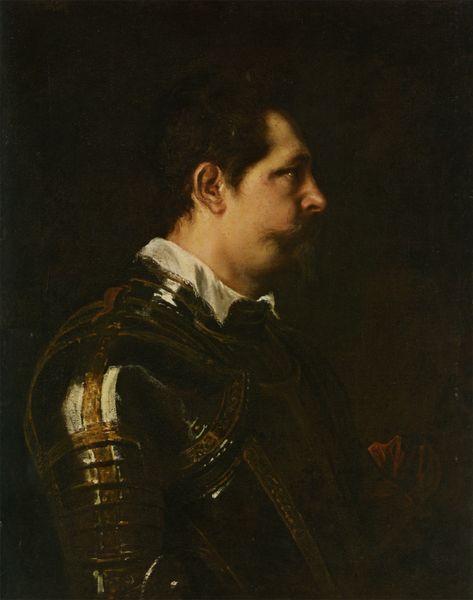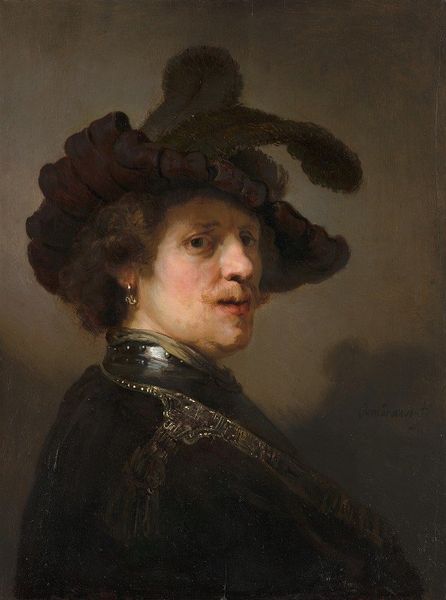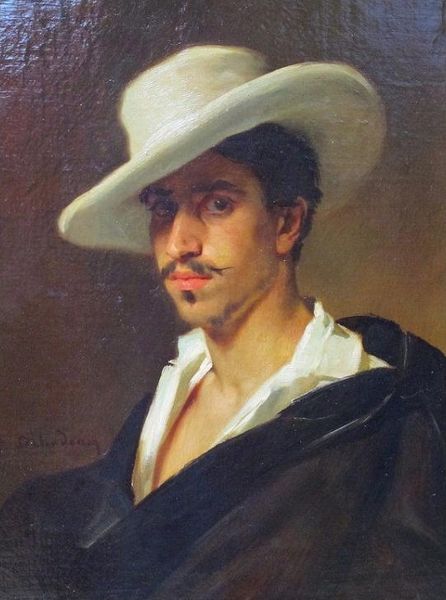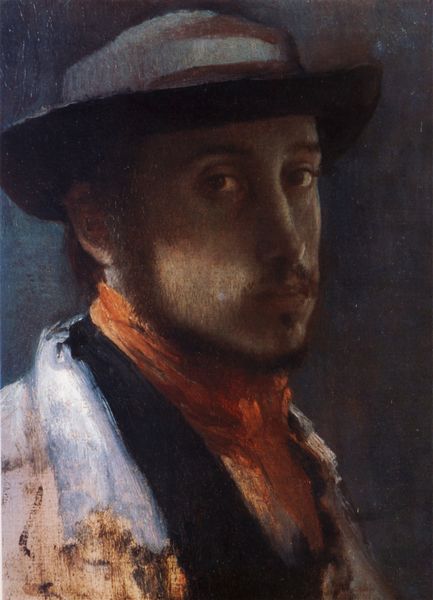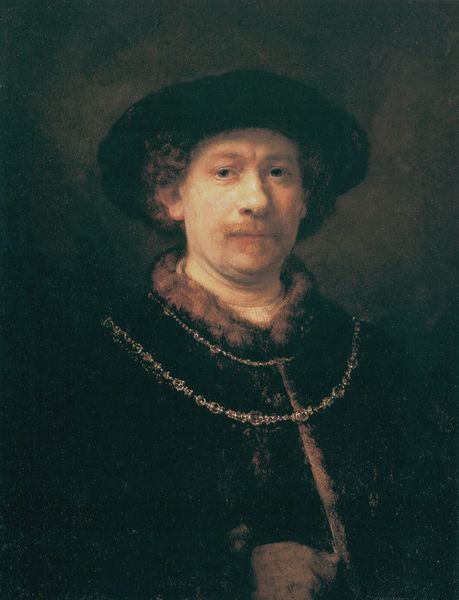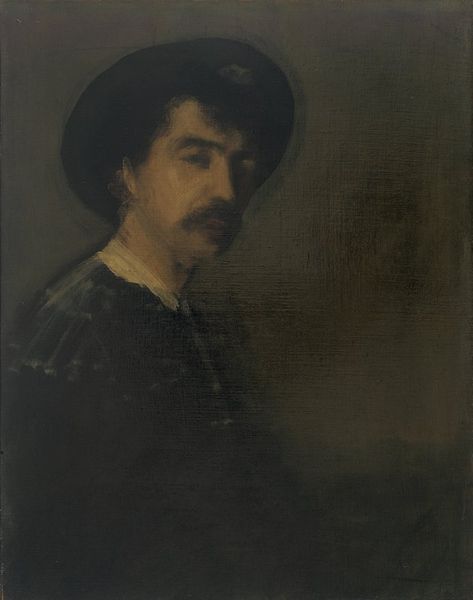
Copyright: Public Domain: Artvee
Ilya Repin painted this study of a man in Spanish costume in 1873. The stark black of the broad-brimmed hat and coat contrasts sharply with the bright, ruffled white collar, drawing our eye to the sitter’s face. The ruff collar, which emerged in the mid-16th century, was not just a fashion statement; it was a symbol of status and self-possession. Think back to Renaissance portraits, where similar collars signified dignity and power. This motif resurfaces across centuries, each time carrying echoes of its past grandeur. The collar's evolution reflects a broader cultural dance between restraint and expression. In Repin's study, the ruff, while present, feels somewhat softened, perhaps hinting at a democratization of the elite symbol, subtly questioning established hierarchies. The emotional gravity of the sitter and the melancholic gaze capture a deep, subconscious longing for a bygone era. Like a dream, the past is never truly gone, and its symbols constantly reappear, transformed but still potent, in the collective consciousness.
Comments
No comments
Be the first to comment and join the conversation on the ultimate creative platform.
